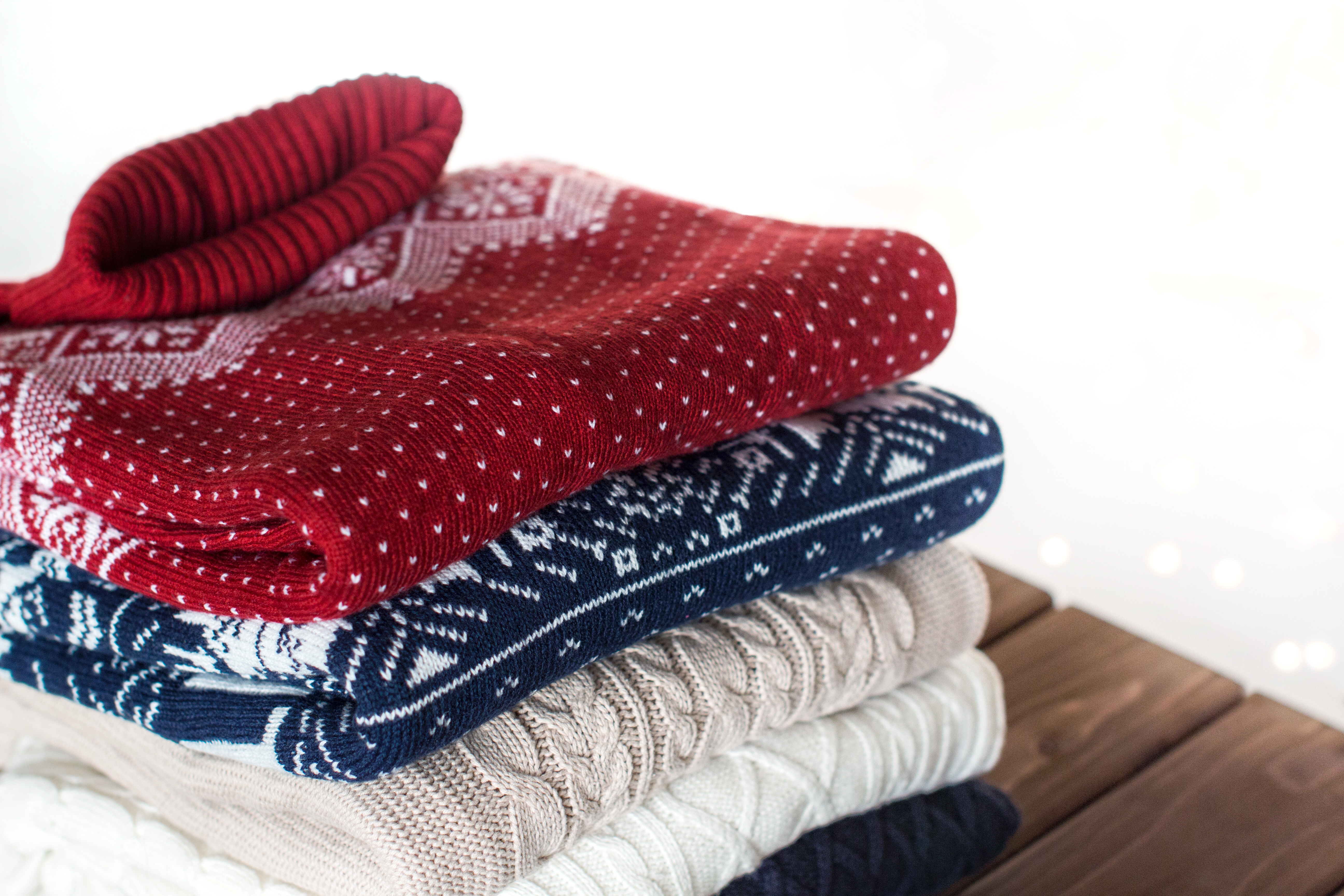'A jumper is for life — not just for Christmas' urge campaigners against Yuletide 'fast fashion'
Some 12 million seasonal jumpers will be sold this year and the vast majority are made of plastic, exacerbating the devastating impact that fast-fashion is having on the planet.


Every year, millions of Christmas jumpers get bought, worn and binned before January 1. As if that weren't bad enough, however, it turns out that nearly all Christmas jumpers on sale in the UK contain plastic — something which has again put the spotlight on how much damage disposable fashion is inflicting on the planet.
According to research by environmental charity Hubbub, 95% of jumpers sold online and on the high street are either partially or wholly from plastic fibres such as acrylic. Three quarters contain some acrylic, while and nearly half are made entirely of it.
Man-made fabrics have a huge impact on the environment because, when washed, they shed minuscule strands that eventually make their way into the ocean. A 2014 study on plastic pollution found that small and large microplastics account for the vast majority of plastic debris found in our seas. Many of these tiny particles are then eaten by marine wildlife, from zooplankton to cetaceans, seabirds and marine reptiles, and can even enter our own food chain.
Acrylic, in particular, is the most polluting fabric because it releases almost 730,000 microfibres in each wash, according to a 2016 study by the University of Plymouth — that’s one and a half time more than polyester, another synthetic fabric, and five times more than a blend of cotton and polyester.
'We don’t want to stop people dressing up and having a great time at Christmas, but there are so many ways to do this without buying new'
The environmental footprint of fast fashion is worsened by the carbon emissions the industry generates to produce garments, which the United Nations Environment Programme estimates to be 10% of the world’s total, the natural resources it uses (it takes around 2,000 gallons of water to make a pair of jeans) or contaminates (textile dyeing is the second largest polluter of water globally) and the amount of waste is causes — the vast majority of fast-fashion clothes is discarded and the United Nations Environment Programme found that the equivalent of one truckload of textiles is burned or buried in a landfill every second.
And nothing is ‘faster’ or more disposable than Christmas jumpers. Hubbub discovered that one out of three people under the age of 35 buy a jumper each year — that’s a massive 12 million jumpers in 2019 alone — and two out of every five festive garments are only worn once during the Christmas season.
‘We don’t want to stop people dressing up and having a great time at Christmas, but there are so many ways to do this without buying new,’ explains Hubbub’s project co-ordinator, Sarah Divall. ‘Fast fashion is a major threat to the natural world and Christmas jumpers are particularly problematic as so many contain plastic.’
Exquisite houses, the beauty of Nature, and how to get the most from your life, straight to your inbox.
Instead, Hubbub recommends people give last year’s jumper another wear or, if they are after something different, ask friends and family whether they’d swap, update a garment they already own with some nifty DIY or buy second-hand from vintage and charity shops.
‘Remember,’ says Ms Divall, ‘a jumper is for life, not just for Christmas.’

Airlines under fire for 'tankering', as planes burn tonnes of extra fuel in order to save a few pounds
A BBC Panorama programme has unveiled a widespread practice where airlines load their aeroplanes with extra fuel to avoid having
Carla must be the only Italian that finds the English weather more congenial than her native country’s sunshine. An antique herself, she became Country Life’s Arts & Antiques editor in 2023 having previously covered, as a freelance journalist, heritage, conservation, history and property stories, for which she won a couple of awards. Her musical taste has never evolved past Puccini and she spends most of her time immersed in any century before the 20th.
